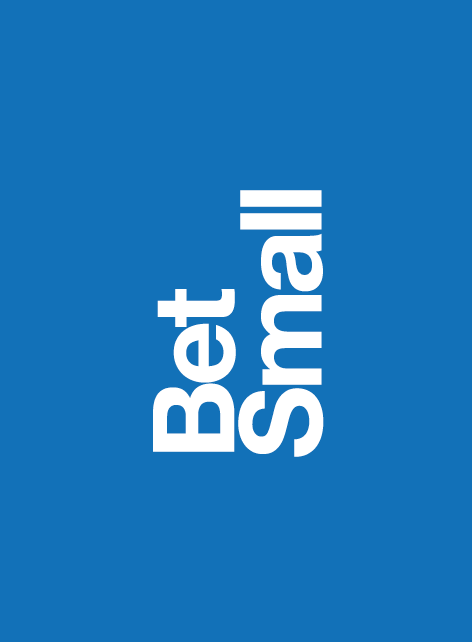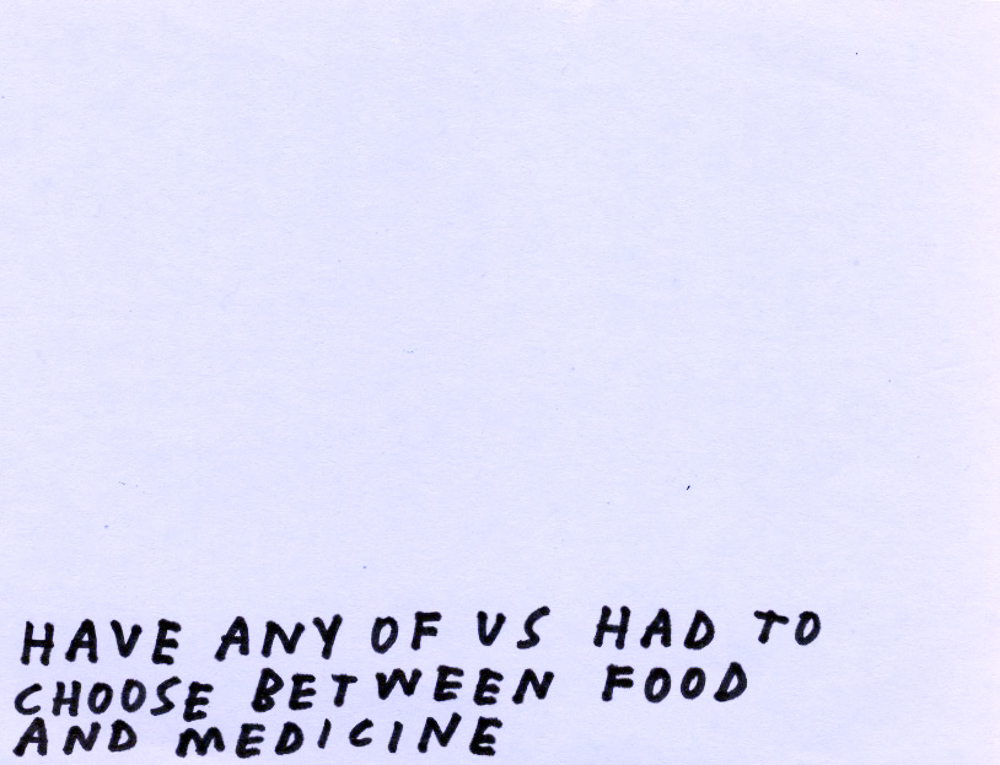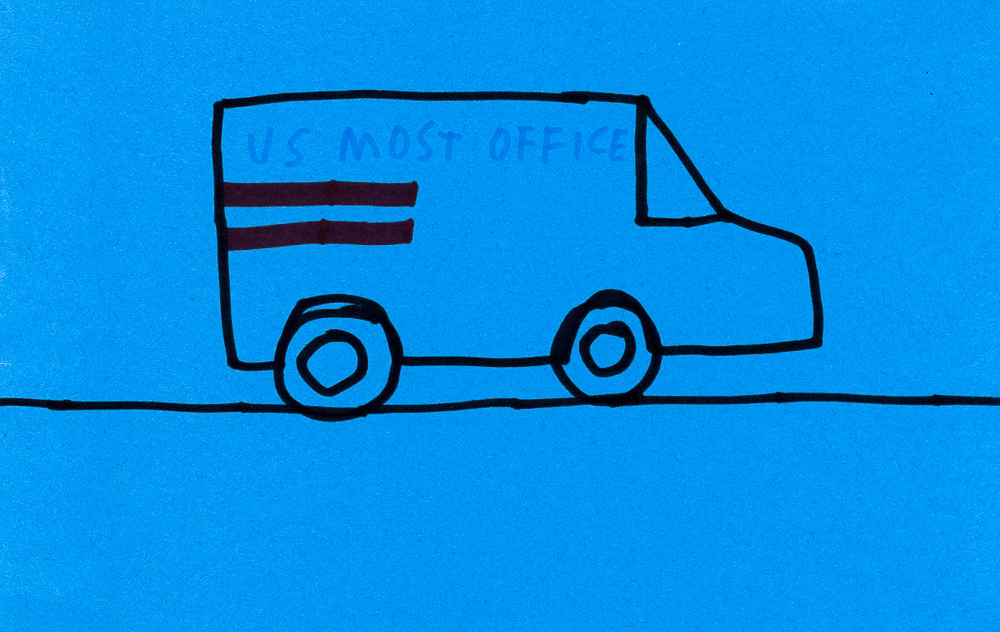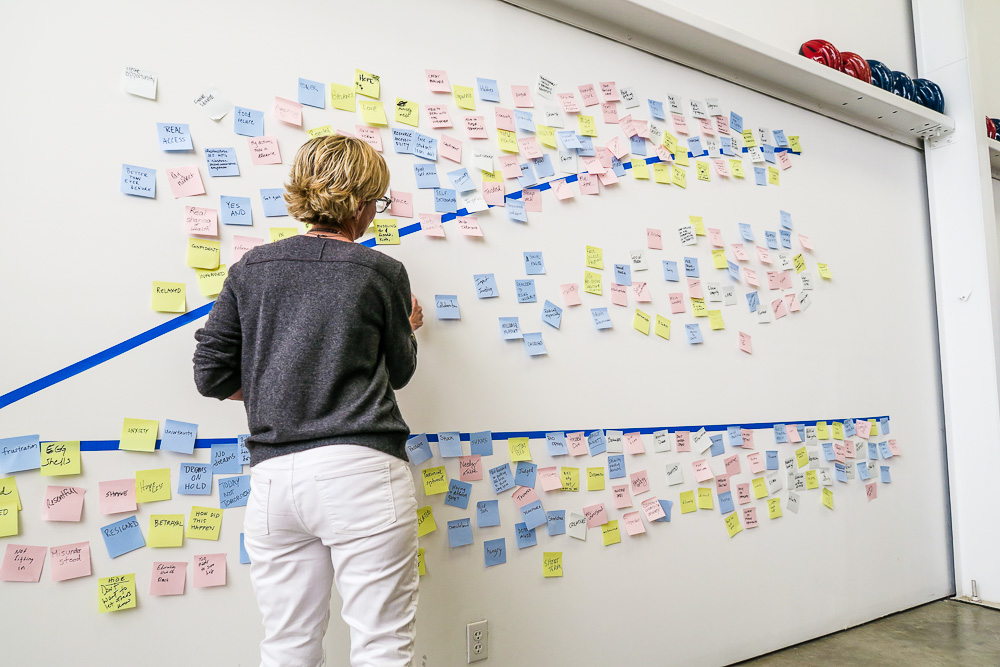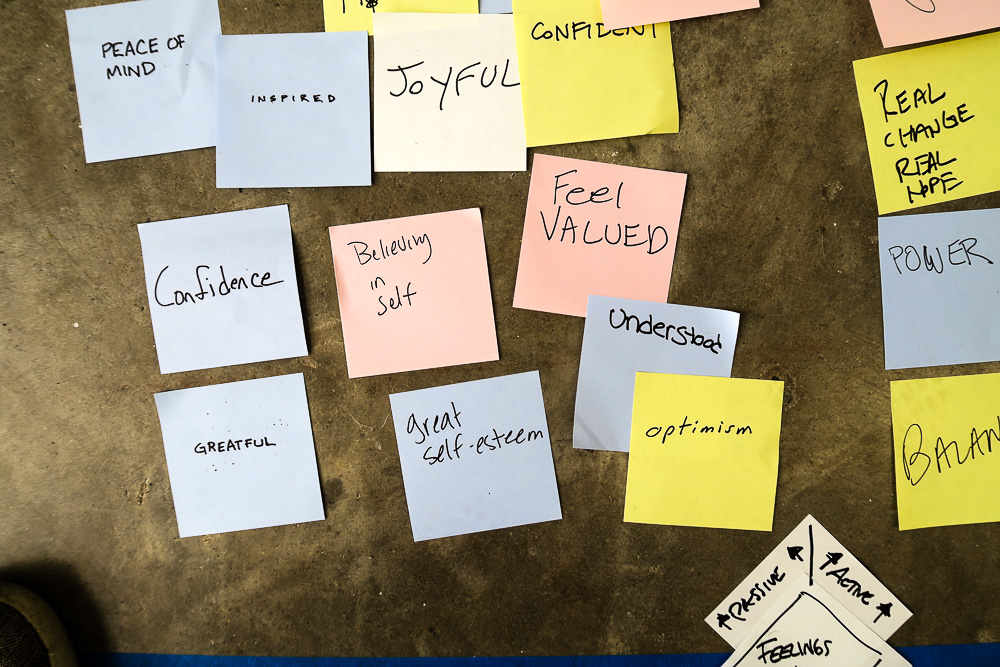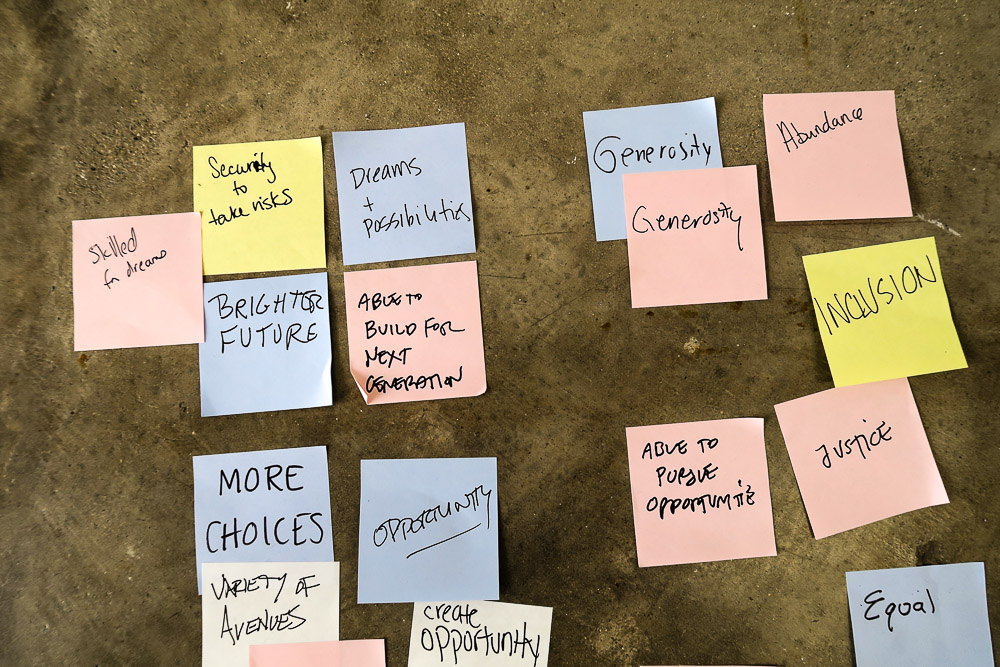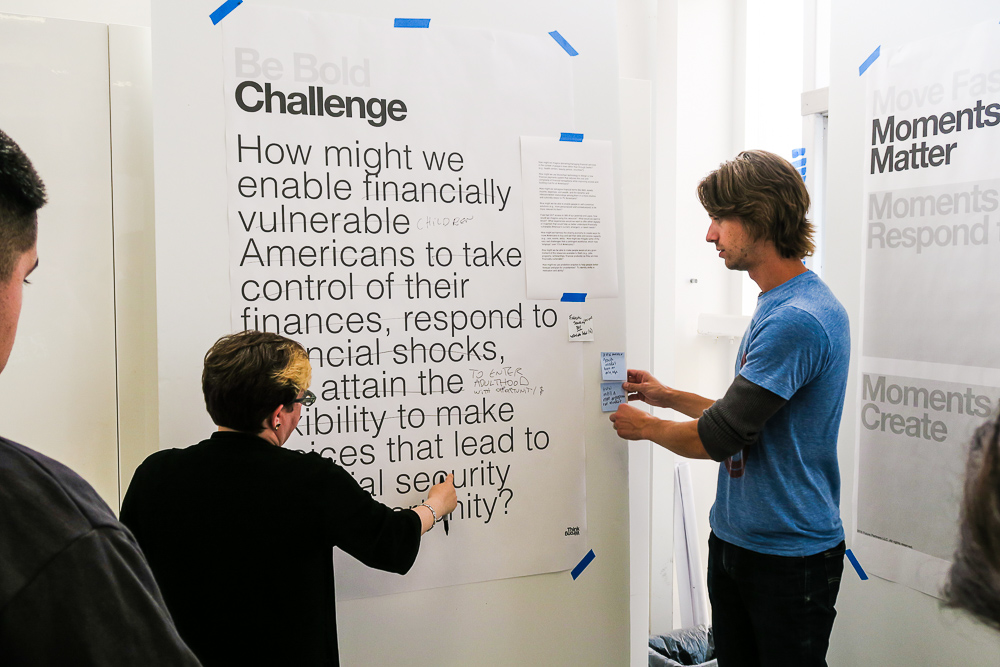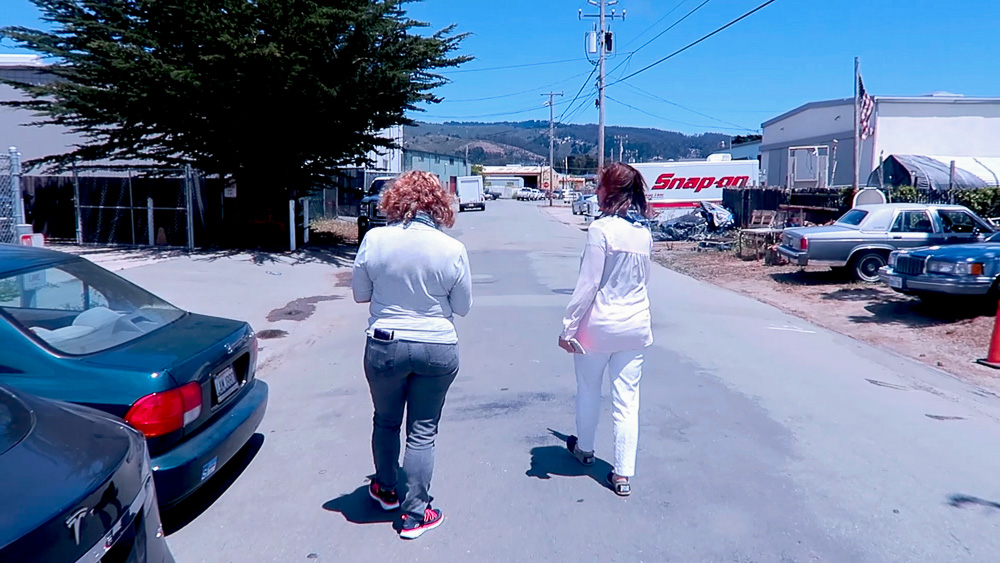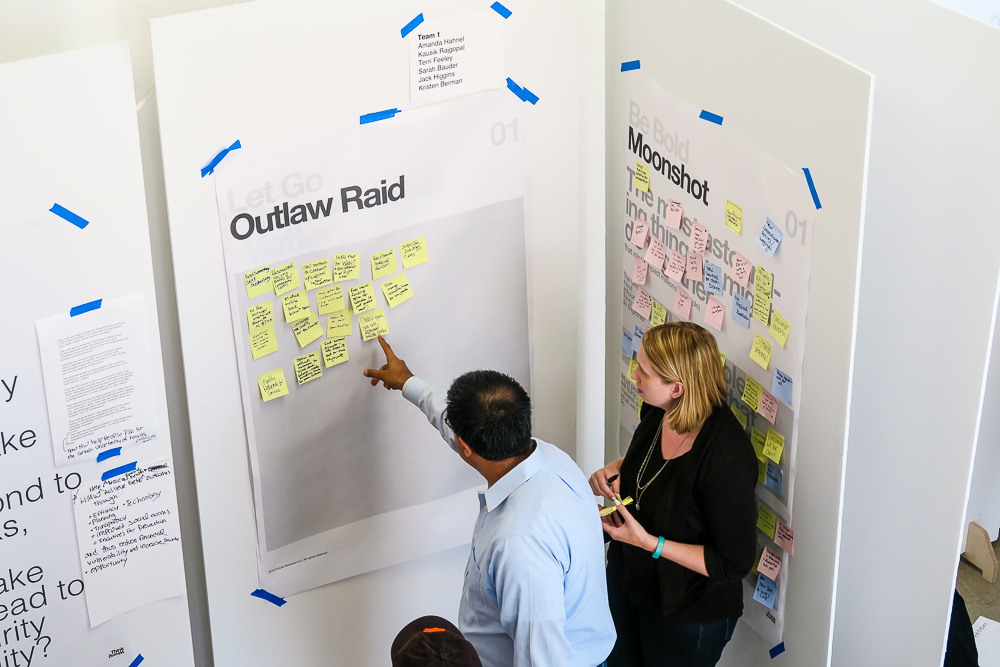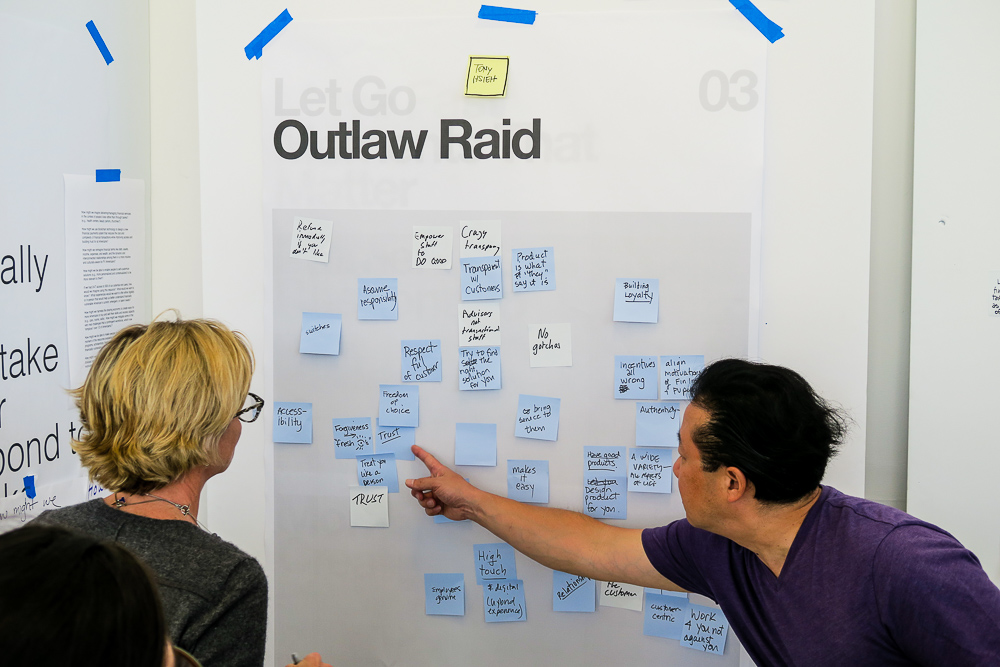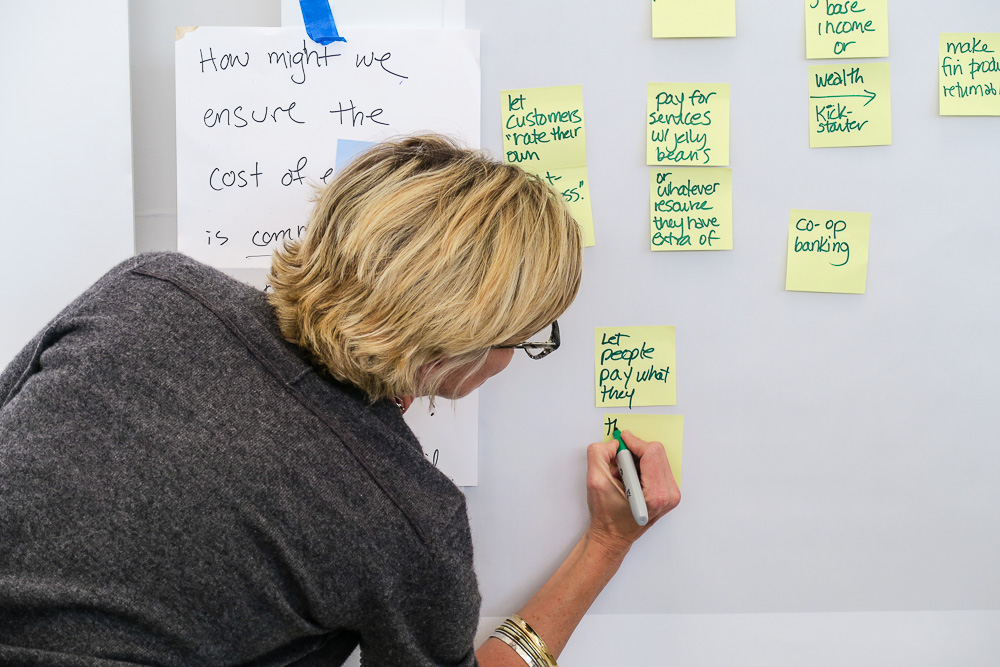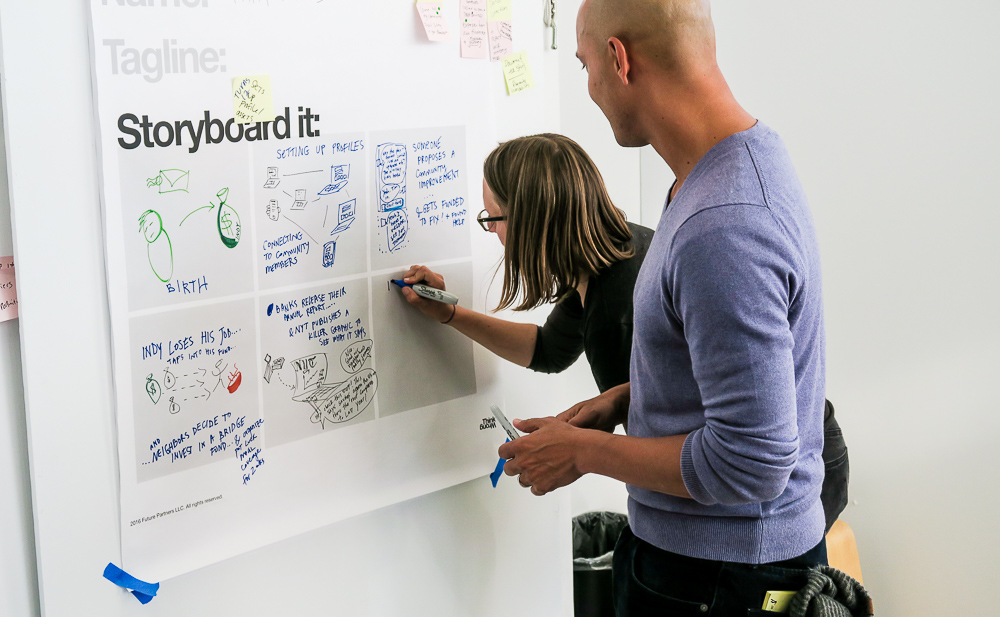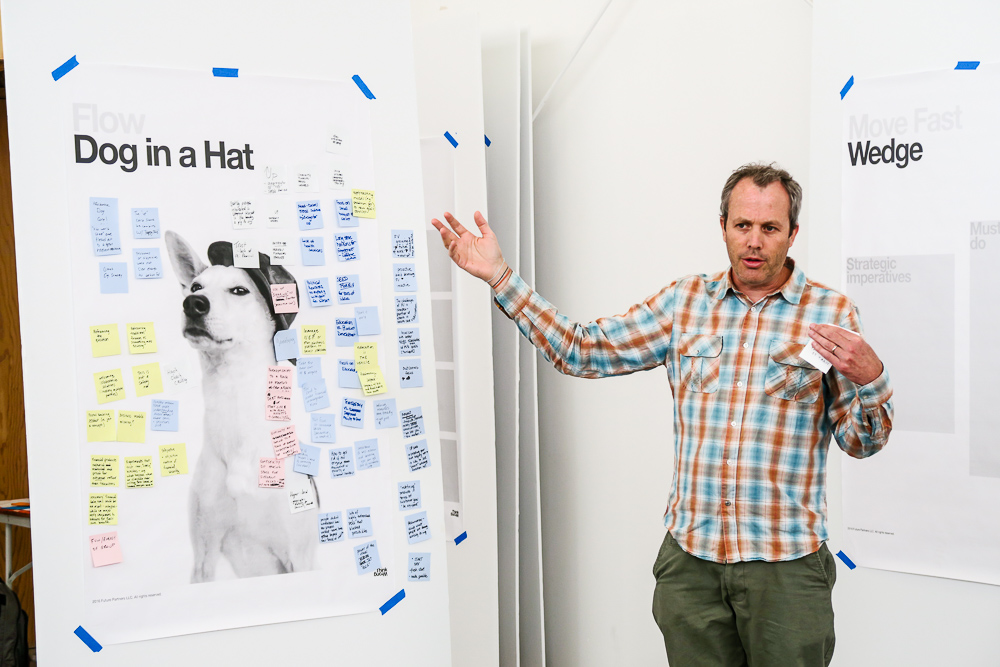D2D Fund Blitz Report
D2D Fund:Think Wrong Blitz
D2D Fund Blitz Report
D2D Fund:Think Wrong Blitz
Sponsored by J.P. Morgan Chase Foundation
How might we enable financially vulnerable Americans to take control of their finances, respond to financial shocks, and attain the flexibility to make choices that lead to financial security and opportunity?
On July 19–20, 2016, D2D Fund and a diverse group of leaders gathered in Half Moon Bay, California, for a Think Wrong Blitz. The Blitz was designed to help D2D Fund step back, let go of pre-existing notions, and generate a portfolio of unexpected and compelling solutions to financial vulnerability in America.
Our objectives
Fuel D2D Fund with deep insights and the Think Wrong Framework to:
- Build substantive connections to new creative thinkers.
- Increase awareness and relevance of D2D Fund.
- Identify the opportunities represented within FinTech.
- Expand the partnership opportunities for D2D Fund.
- Identify five to seven promising product, service, or public policy solutions suitable for further exploration and development by D2D Fund.
Desired outcomes
- We are fueled with fresh insights and inspiration.
- We are equipped to change the way things are with Think Wrong Language, Frameworks, Tools, and Techniques.
- We have crafted a shared and motivating vision of impact with peers.
- We have built meaningful connections with new creative thinkers.
- We have a portfolio of potential disruptive solutions and small bets ready to be made to accelerate learning and insight.
- We have new insights and approaches as to how we might:
- Increase awareness and relevance of D2D Fund.
- Identify new opportunities within FinTech.
- Pursue new partnerships.
Think Wrong Approach
Think Wrong Approach
Think Wrong
We used a variety of Think Wrong Drills—and diverse collaborators—to imagine how D2D Fund might better fulfill our mission to serve financially vulnerable Americans.
Why Driving Change Is Hard
Two powerful forces work against us—biology and culture.
All of us find ourselves on the predictable path of how things have been, how things are, and how they will be. This status quo is forged by the synaptic connections in our brains and our cultural beliefs, biases, orthodoxies, and assumptions.
But if you are not content with the predictable path, you dare to look beyond the status quo. You imagine different outcomes than the one at the end of the predictable path. So how do you forge a bold path? How do you take the Einsteinian and Steve Jobsian leap into the uncertain and unknown?
Our best leaders and employees fight the powerful biological and cultural forces that conspire to force them back onto the predictable path. They find ways to blaze a bold path—and to resist snapping back to business as usual—when it matters most.
To keep from losing to the norm, we need to be able to deflect from the status quo and protect ourselves from the biological and cultural forces trying to pull us back in.
The human brain is amazing. It locks in what we experience and learn on the fly. This learning builds neural pathways that enable us to make quick, shortcut decisions and to take action without thinking or having to relearn simple tasks. This is good. Imagine if we had to Google “How to brush my teeth” every morning.
The complications that arise from how we’re biologically wired are compounded when a collection of brains works this way. Group think becomes group belief. Group belief becomes dominant culture. What’s acceptable, normal, and expected conspires against anything that lies outside the shared beliefs, biases, orthodoxies, and assumptions of the organization, community, tribe, state, or nation.
If we want to go from A to Steaming Round Thing, we need to trick our brains. We need to let go of our beliefs, biases, orthodoxies, and assumptions. We need to start solving from a brand-new place. We need to unleash our inner Picassos.
Practice Mismatch.
Right tools. Wrong problem.
There is an obsession—by schools, executives, and consultants—with best practices, optimization, ROI, and metrics. These have become the standard by which we’re told we should measure ourselves and our impact.
When we are certain which problem to tackle, and we know how to solve it, Think Right Practices are useful. They help eliminate waste, improve quality, scale solutions, and increase productivity.
But Think Right Practices provide the answer to a very small subset of challenges—those for which we are certain of the problem and know the solution. Thinking right is wrong when we’re seeking solutions beyond the status quo.
When it comes to discovery, innovation, and changing the game, adopting the mindset of a scientist or an artist with a hypothesis is much more likely to yield insights and new possibilities than conventional, think right business practices.
To successfully navigate the uncertain and unknown, we need a new language, new frameworks, new techniques, and new tools.
Think Wrong Practices
Dare to make a difference.
Find fresh inspiration.
Expand what’s possible.
Gain insights through making.
Discover what works.
Achieve impact sooner.
Think Wrong Drills
Framer-in-Chief
Deflection Point
Moonshot
Challenge the Challenge
8 Word Impact
5x5 Whys
The Dig
Outlaw Raid
Brand Takeover
Be Stupid
Name It
In a Box
$100 VC Fund
Learn From Investment
Dead Cat
Matters Most
Impact x Doability
Incubation Waypoints
Week Story
D2D Blitz Outcomes
D2D Blitz Outcomes
New insights, sharper focus, better alignment, greater impact.
We spent the day thinking wrong—letting go of assumptions, orthodoxies, and biases—to conceive of fresh, bold solutions.
A Portfolio of Small Bet
Candidates
Our Impact Vision
A Portfolio of Small Bet Candidates
We focused on the small bets with the greatest potential for impact.
We used $100 VC Fund—a Bet Small Drill—to overcome the Think Right “Do What the Boss Says” Orthodoxy, which defers to higher-ups to dictate strategy and set priorities.
Instead we embraced the Think Wrong Bet Small Practice, using the collective wisdom of the team to identify the highest-potential ideas where we might make our first bets.
We found we were unable to finish our prioritization without further understanding the emerging solutions.
So we used Round Robin—a Make Stuff Drill—to skip the Think Wrong “Deep Dive” Orthodoxy, which spends too much time and too many resources on defining and specifying emerging solutions too soon.
Instead we applied the Think Wrong Make Stuff Practice, quickly creating richer narratives for each emerging solution.
Round Robin helped us craft:
- Robust descriptions of emerging solutions that reflect the points of view, knowledge, and experience of the team
- Descriptions that capture the inspiration, aspiration, and energy of the team while they were still fresh in our minds
Click the Learn More button in each of the following emerging solutions to access the full narratives.
We also used 5 Whys—a Be Bold Drill—to get past the Think Right “ROI” Orthodoxy, which defines value as profit or savings.
Instead we thought wrong about value—exploring why our emerging solutions might matter to those who benefit directly and indirectly from what we do.
The 5 Whys Drill helped us identify a broader and deeper set of potential value propositions and promises that we might make to the people who matter most to our success—and who our success matters most to.
Kids’ World Co-op
A social and “real” currency savings and spending product
“I will have coverage for my kids, no matter how varied my work schedule, and my kids will always be looked after by good, kind, professional people.”
Why Kids’ World Co-op matters to Maria:
I can match my work hours with my kids’ daycare hours.
Why that matters
This enables me to accommodate my employer’s “on demand” scheduling practice and to pay only for the daycare I need.
Why that matters
This enables me to better support my family while earning my childcare certification.
Why that matters
This enables me to know—and feel—like I can do this life I have.
Why that matters
My family and I can feel stable, capable, and proud of what we are able to do.
Green Envelope
Universal access and participation
Kill predatory lenders
Meet customers where they are
“Finally, there is a way to cash checks without having to pay those crazy fees and having to travel to the other side of town!”
Why Green Envelope matters to Maria
Green Envelope is convenient, there are fewer and less expensive fees, and I trust the post office.
Why that matters
This is important to me because my life is filled with hassles and I want it to be easier; I don’t want to waste my money; it is my money, so I have to trust who is handling it.
Why that matters
This is important to me because with more time and money and less hassle, I will have more resources to do what I want to do.
Why that matters
With more resources, I will be healthier mentally and physically. I can decide how to spend my time; I can put money away for a new washing machine, rather than having to put it on my credit card; and I can feel less frustrated.
Why that matters
If I am healthier and less frustrated, I can be a better parent; I can give my kids a better life.
Pokémoney
Meet people where they are
Personal finance as a lifelong adventure
Explore opportunities at the intersection of fantasy and reality (online and in-person game play)
“He learns about the importance of savings, thoughtful purchasing, and long-term financial planning without even knowing it!”
Why Pokémoney matters to Maria
Pokémoney provides financial education my child will listen to and learn from.
Why that matters
Having financial education allows my child to make better, more responsible financial choices.
Why that matters
When my child makes more responsible financial choices, he can do more for himself and rely on me less.
Why that matters
My children’s financial independence allows all of us to invest in ourselves to reach our potential.
Why that matters
Working toward our potential allows each of us to be more self-fulfilled.
Hippy Trails
Online sharing economy and community
Social, economic, and technical platform
“The more valuable contributions I make to the community, the more access I have to different types of financial products and services from the credit union.”
Why Hippy Trails matters to Maria
I can get access to financial advice from people who are like me.
Why that matters
Having access to financial advice enables me to feel more financially capable.
Why that matters
Feeling more financially capable enables me to plan and pursue new goals, such as saving for an education or for a down payment on a house.
Why that matters
Being able to successfully pursue these types of goals makes me feel hopeful. I can do this; I am not stuck.
Why that matters
Moving forward enables me to feel more fulfilled and accomplished—less vulnerable. I can hold my head up high and be a positive role model for my kids.
Unbound
Product that reimagines consumer bankruptcy
Quantify the opportunity cost of indebtedness
Reparations
“Unbound is giving me a fresh start. It will make it possible for me to actually save some of the money I’m earning.”
Why Unbound matters to Maria
Unbound gets me out from under the weight of this debt.
Why that matters
Relieving my debt is important because it gives me a fresh start—a clean financial slate.
Why that matters
Having a clean financial slate allows me to access goods and services that were previously unattainable when I had the burden of debt.
Why that matters
Accessing goods and services, such as a car, will afford me greater options with respect to work.
Why that matters
Having better work options will allow me to better support my kids and to fulfill my personal potential.
Tandem
Financial services for you and with you
Outcome-based fees/fee for performance/value-based pricing
“Tandem gives me someone to work with to help me get where I want to go, and a sense of control over my finances.”
Why Tandem matters to Maria
Tandem provides me with a committed partner who gets me, and with access to financial products that work for me.
Why that matters
I feel understood and capable.
Why that matters
I can make life choices and pursue opportunities more confidently.
Why that matters
I can make things happen for myself and my family.
Why that matters
I am capable and can be a stable base for my family.
Okapi
Earn
Training and job placement
Matching and efficiency
“I can find a good job and receive the training necessary for me to do the job well with Okapi.”
Why Okapi matters to Maria
I can get the training I need to have a career that I would enjoy.
Why that matters
I am not tied to a job that I dislike or one that doesn’t provide a good salary/benefits.
Why that matters
I have social and financial mobility.
Why that matters
I have an opportunity to better provide for my family and pursue a career that I have always wanted to do but never had the resources or opportunity to do.
Why that matters
My family and I are able to enjoy the physical and mental wellness that comes with financial stability.
Jet Pack
Birthright
Learn, apply, earn
“Jet Pack is a program that teaches my son how to handle money, and is given to him with no questions or strings attached.”
Why Jet Pack matters to Maria
Jet Pack provides my son with real opportunities to learn about money.
Why that matters
By learning from real-life money situations, my son is learning how to think about, appreciate, and respect money—and the associated opportunities and difficulties that money-related decisions can bring.
Why that matters
This learning is helping both of us develop a higher comfort level about money decisions and gives us an opportunity to talk naturally about money.
Why that matters
A higher comfort level with money and an ongoing conversation between us about money make us both feel more competent.
Why that matters
As we feel more competent, we feel more comfortable thinking about money decisions, rather than just avoiding them.
Back Me
Investment mindset for the financially vulnerable
Reframe indentured servitude
Reframe junk bonds/small cap stocks
Outcome-focused repayment is conditional on the investment “working”
“There is comfort in being able to reach out to someone who can financially invest in my daughter’s future, whether it means helping her purchase a laptop or take out a student loan.”
Why Back Me matters to Maria
I don’t have the funds to send my daughter to college and buy her the necessary technology she needs to succeed.
Why that matters
The scholarship she received covers her tuition, but I can’t afford all the necessary “bells and whistles,” such as a laptop.
Why that matters
I see my daughter’s potential and I know if others meet her and see it, they will want to invest in her talents.
Why that matters
We just need the support. “It takes a village,” right?
Why that matters
I want my daughter to be able to start college on a fair and even playing field.
Up
Simplification
Comprehensive bundle of portable benefits
Liberation
Derisking through pools
“Up gives me freedom. I can choose the ‘benefits’ that are right for my family and alter the mix at any time depending on my circumstances.”
Why Up matters to Maria
I’m less tied to any one employer.
Why that matters
I’m free to change jobs or schedules when better opportunities come up; I have greater control, autonomy, and power.
Why that matters
That sense of power and self-determination is what I want—to be more in charge of my own future, and more confident of my ability to take care of myself and my family.
Why that matters
Not only am I gaining more control, I’m part of a community of motivated people all taking charge of their lives.
Why that matters
Community and self-respect matter to me. I want to be a respected community member and pass on these values to my children.
Social Spend
Earn, save, spend, and give social currency
“Social Spend makes it possible for all of us to help each other out and feel valued and resourceful in the process.”
Why Social Spend matters to Maria
I value Social Spend because I get tangible credit for helping my neighbors by using my skills.
Why that matters
It’s important for me to get tangible credit because my time is precious. Apart from feeling valued, I gain value with points.
Why that matters
Getting value for the time I spend outside of work affords me with a sense of security, knowing that I can accumulate earnings even when my regular work schedule is unpredictable.
Why that matters
The ability to take on extra work of my choosing means I am also building up a set of skills that I have chosen to invest in.
Why that matters
Even though my regular job is not super-fulfilling, I know that I am building up credibility and expertise with my neighbors for the other activities I do through Social Spend. That sense of independence and self-worth allows me to thrive.
DeRisk Me
FICO 2.0
Reframing risk
Behavior-linked risk profiles (How do we make borrowers less risky?)
“They’re working to make sure that I’m able to access and use credit responsibly. I can’t believe I’ve finally found a company that wants me to succeed!”
Why DeRisk Me matters to Maria
I need a strong credit score to be able to borrow money.
Why that matters
DeRisk Me helps me to improve my credit score by filling any gaps in insurance coverage so I am a better risk.
Why that matters
DeRisk Me proves that I am a better risk to potential lenders, so they are more likely to lend to me.
Why that matters
I can have access to short-term credit when I need it.
Why that matters
I have options.
Our Impact Vision
We explored the kind of impact that we aspire to make in the world.
We used 8 Word Impact—a Be Bold Drill—to:
- Align our people and partners to a higher-order purpose.
- Unlock the energy and passion of our people and partners.
- Engage our people and partners emotionally and functionally.
We created an impact statement for the D2D Lab to help prioritize our effort and measure our progress:
Incubate solutions with financially vulnerable people to help them realize financial security.
We will do additional work to elaborate on what we mean by each element of the Lab Impact Vision.
We came came up with impact statements that support the D2D Lab Impact Vision:
Design solutions for an inconsistent income safety cushion.
Co-create self-sufficiency with hard workers.
Empathize with the challenged to be in control of life.
Co-invent with advocates for industrious people to provide for the future.
Support financially stretched workers to achieve financial security.
Disrupt products for disenfranchised populations.
Shift current strategic financial behavior to develop self-worth.
Partner with moms and community members to build tools for confidence.
D2D Fund as Art
D2D Fund as Art
The Tucker Filter
Tucker listened, interacted with teams, and responded to our challenge and what occurred over the course of the Think Wrong Blitz with clever, humorous, and thought-provoking works of art.
We invited fine artist Tucker Nichols into the room to turn what he saw and heard into art.
D2D Fund Outputs
D2D Fund Outputs
Every Output Is an Input
Each Think Wrong Drill produces useful output. Documentation of our work provides a rich collection of ideas and insights to mine as we move forward.
Djbouti
Deflection Point
Matters
Most
Moonshot
Challenge the Challenge
The Dig
Outlaw
Raid
Brand Takeover
Be Stupid
Name It
Impact x Doability
In a Box
Dead
Cat
Dog
In a
Hat
Waypoints
Incuabation
Djbouti
We wanted teams to adopt a positive mindset, and to improv with each other like a great jazz ensemble.
We used Djibouti—a Flow Drill—to escape the Think Right responses of saying “No” before ideas have had a chance to form and finding flaws in new ideas to argue why they won’t work.
Instead we adopted the Think Wrong response of saying “Yes, and...” to build on new ideas and push them in directions they might not otherwise go.
Djibouti helped us:
- Shift our mindset
- Become more effective collaborators
- Avoid idea-killing devil’s advocacy
Deflection Point
We wanted to explore the difference we might make.
We used Deflection Point—a Be Bold Drill—to describe, then depart from, the status quo.
This freed us to think wrong about how things might be rather than focus on the Think Right Practices of Efficiency, Productivity, Optimization, and Best Practices.
Deflection Point helped us:
- Surface of how things are and how they might be.
- Identify useful trends and global forces that might be leveraged.
- Engage our people and partners in a shared change vision.
Feelings and Emotions
To
From
Life Purpose and Needs
From
To
Financial Security Solutions
From
To
Freedom and Opportunity
From
To
Matters Most
We considered who might be most important to our success—and who our success might matter to most.
We used Matters Most—a Move Fast Drill—to avoid the time-consuming Think Right bias for conducting in-depth consumer research to create customer segmentations.
Instead we applied the Move Fast Practice, relying on the collective wisdom of our colleagues and our informed intuition to determine whom we should focus on.
Matters Most helped us quickly create an inventory of the highest-potential beneficiaries of our efforts.
Moonshot
We needed to escape the biases, orthodoxies, and assumptions that define the status quo—and that limit the impact we might have.
We used Moonshot—a Be Bold Drill—to escape the Think Right bias for incremental improvement and risk mitigation.
Instead we applied the Think Right approach of imagining bold challenges and opportunities beyond the status quo. We dared to have impact others would never consider.
Moonshot helped us:
- Elevate our opportunity for impact.
- Craft a shared vision of impact.
- Define aspirational goals.
- Identify reasons to believe we might accomplish them.
Team 1:
Healthcare industry and providers
Team 2:
Financial institutions
Team 3:
Educators
Team 4:
Working families and the financially distressed
Team 5:
Youth and children
Team 6:
Funders
Team 7:
Policy makers
Challenge the Challenge
We wanted to encourage, build, and grow a culture that questions the way things are.
We used Challenge the Challenge—a Be Bold Drill—to disrupt the Think Right response of accepting the challenge as it is given.
Instead we thought wrong, embracing our inner teen, pushing back, and reframing the challenge to one that we felt mattered more.
Challenge the Challenge helped us create multiple entry points for addressing our challenge in ways that matter to the people we wish to serve.
Team 1:
How might we dramatically reduce healthcare costs and debt for all Americans?
Team 2:
How might we disrupt the way financial institutions do business to provide all Americans with the opportunity to take control of their finances?
Team 3:
How might we make it socially acceptable to learn about and seek financial education and resources?
Team 4:
How might we equip the financially vulnerable and disappearing middle class to take control of their finances, respond to financial shocks, and attain the flexibility to make choices that lead to financial stability and opportunity?
Team 5:
How might we enable young Americans to enter adulthood successfully with financial security, capabilities, and opportunity?
Team 6:
How might we enable funders to support/ empower financially vulnerable Americans so they can achieve financial stability?
Team 7:
How might we create an environment where fewer people in the U.S. are financially vulnerable and have access to effective and relevant support where they are?
The Dig
We let new things spark our imagination.
We used The Dig—a Get Out Drill—to overcome the Think Right response of seeking inspiration from within our own sector, industry, market, or category.
Instead we used The Dig to put the Think Wrong Get Out Practice into action.
The Dig helped us:
- Become more attentive and receptive to our environment.
- Make serendipitous connections.
- Bond as a team and become more bold.
Outlaw Raid
We needed to get past the obvious answers and start imagining status-quo busting ideas with our own brains.
We used Outlaw Raid—a Let Go Drill—to overcome the Think Right assumptions about what’s possible.
Instead we thought wrong to let go of what our brains told us what will and won’t fly.
Outlaw Raid helped us:
- Expand our perception of what might be possible.
- Generate ideas that depart from the status quo.
- Generate more discrete and surprising ideas.
Brand Takeover
We wanted to overcome perceptions of what is—and is not—possible for our organization.
We used Brand Takeover—a Let Go Drill—to bust the cultural conventions that define what can and cannot be done.
We thought wrong about what might be possible, hijacking someone else’s brand to imagine solutions that we might never allow ourselves to consider.
Brand Takeover helped us generate convention-bending ideas that are unbiased by internal assumptions, orthodoxies, and biases.
Be Stupid
We used Be Stupid—a Let Go Drill—to overcome our Think Right problem-solving orthodoxies.
Instead, we thought wrong, forcing ourselves to start solving from the unlikeliest of places—imagining the stupidest thing we might do.
Be Stupid helped us:
- Conceive of Inconceivable new starting points.
- Imagine solutions far beyond the status quo.
- Generate ideas unbiased by internal assumptions and orthodoxies.
We needed to “get over ourselves” and our pride in our problem-solving prowess.
Impact x Doability
We used Impact x Doability—a Move Fast Drill—to bypass the Think Right response of conducting time-consuming and expensive research and analysis of emerging solutions.
Instead we took the Think Wrong approach, using the collective wisdom of the team to rapidly sort, evaluate, and select the most compelling and highest-potential ideas.
Impact x Doability helped us:
- Define high impact.
- Define what makes a solution doable.
- Focus on a set of high-potential ideas.
We prioritized ideas for high impact.
Name It
We wanted to craft a story for our emerging solutions—and understand how people might experience it.
We used Name It—a Make Stuff Drill—to inoculate us against the Think Right reflex of snuffing out ideas before they have a chance to evolve.
Instead we took the Think Wrong approach, quickly bringing our ideas to life so we might better understand their potential—and to allow them to inspire other potential solutions.
Name It helped us:
- Understand our emerging solutions and the problems they are addressing.
- Imagine early-use scenarios.
- Share our ideas and learn from others.
In a Box
We created clear, compelling, and concise presentations of our emerging solutions.
We used In a Box—a Make Stuff Drill—to avoid the Think Right PowerPoint Orthodoxy, forcing everything into the business-as-usual format of bullet points and white papers.
Instead we embraced the Think Wrong Make Stuff Practice, using boxes to bring the most compelling facets of our solutions to life.
In a Box helped us:
- Craft clear and compelling language.
- Create tangible models of the products, services, processes, experiences, and so on.
Unbound
Find your future.
Tandem
When you’re successful, we succeed.
Up
Let’s go higher.
Pokémoney
Your virtual financial gym!
Jet Pack
Propel your life.
Okapi
Learn your stripes.
Kids World Co-op
Care when you need it, pay how you need to.
Kangaroo
Give easy.
Hippy Trails
FICO doesn’t define us.
Back Me
Pay it forward.
Green Envelope
Delivering your future.
Dog In a Hat
We wanted to spot what’s hot, and capture the most compelling moments of the day.
We used Dog in a Hat—a Flow Drill—to reconnect with the previous day of the Blitz and to share what caught caught our attention.
Dog in a Hat helped us:
- Ideas and insights that might otherwise slip through the cracks
- Identify what Blitzers found most engaging and compelling
- Affirm that the day was fruitful
- Bond the group
Dead Cat
We used Dead Cat—a Bet Small Drill—to escape the Think Right Gantt Chart Orthodoxy and avoid imposing complex program and project plans before the emerging solution—and understanding of the problem being addressed—are fully understood.
Instead we applied the Think Wrong approach—letting questions, exploration, discovery, learning, and pivots guide development.
Dead Cat helped us generate questions to guide exploration of:
- Customer pain points and desirability of emerging solutions
- Technical feasibility of emerging solutions
- Economic viability of emerging solutions
We wanted to use discovery to drive our development processes and activities.
Waypoints Incubation
We wanted discovery to drive our development processes and activities.
We used Waypoints—a Move Fast Drill—to overcome the Think Right Orthodoxy of using complex program and project plans to control development.
Instead we embraced the Think Wrong Approach of letting exploration, discovery, learning, new questions, and pivots guide development.
We prioritized the most difficult questions raised by Up and Unbound (using the LFI Drill) and mapped them on a 12-week incubation plan, giving us:
- A first cut at the scope of development effort
- Priority milestones
- Priority questions to answer through development and execution
- Assignments for imperatives, workstreams, or “swim lanes”
Once we have prioritized our other financial solutions, we will run the LFI (Learn From Investment) and Waypoints Drills for our top candidates.
D2D Fund Blitzers
D2D Fund Blitzers
Truth+Truth=Fiction
We used Truth+Truth—a Flow Drill—to invite play and laughter into the room—randomly matching each Blitzer’s true confession (disguised by nondominant handwriting) with their WWE wrestling photos.
True pictures + True confessions = Random fiction.
Enjoy!
We created fictitious stories with our boldest wrestler poses and true confessions.
D2D Fund Blitz Resources
D2D Fund Blitz Resources
Thinking wrong produces valuable resources for the challenge your Blitz was designed to address—and other challenges you might be facing.
Future provides Blitzers with access to the Think Wrong Lab so you can get maximum value from the resources we have generated together.
Click OVERVIEW below for a quick recap of the purpose of the Blitz.
Click BLITZERS below to see who participated in the Blitz—and contact them if you like.
Click GUIDE below to access the final guide for the Blitz. Learn how to run any of the drills used by clicking it in the Guide.
To view the complete collection of photographs, videos, and audio files documenting your Blitz, click MEDIA below.
- Media is organized by Think Wrong Practice and Drill
- Folders titled B Roll or In Action contain photos of Blitzers working together
- Folders titled Output contain detailed documentation of what was produced through the drill.
Forgot your Think Wrong Lab password?
Click Get New Password on the login screen and one will be emailed to you.



















